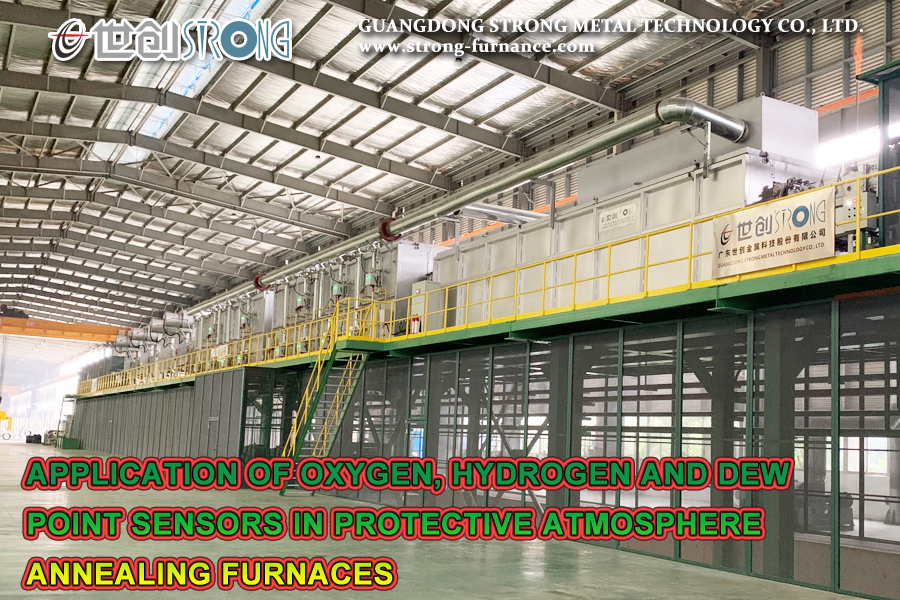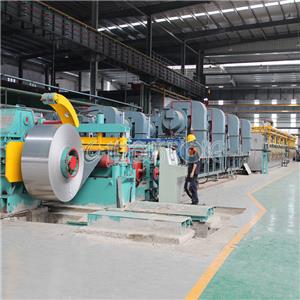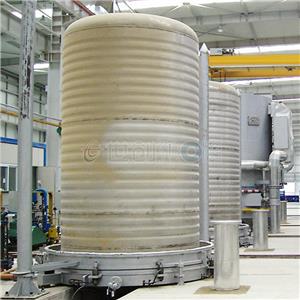Application of oxygen, hydrogen and dew point sensors in protective atmosphere annealing furnaces
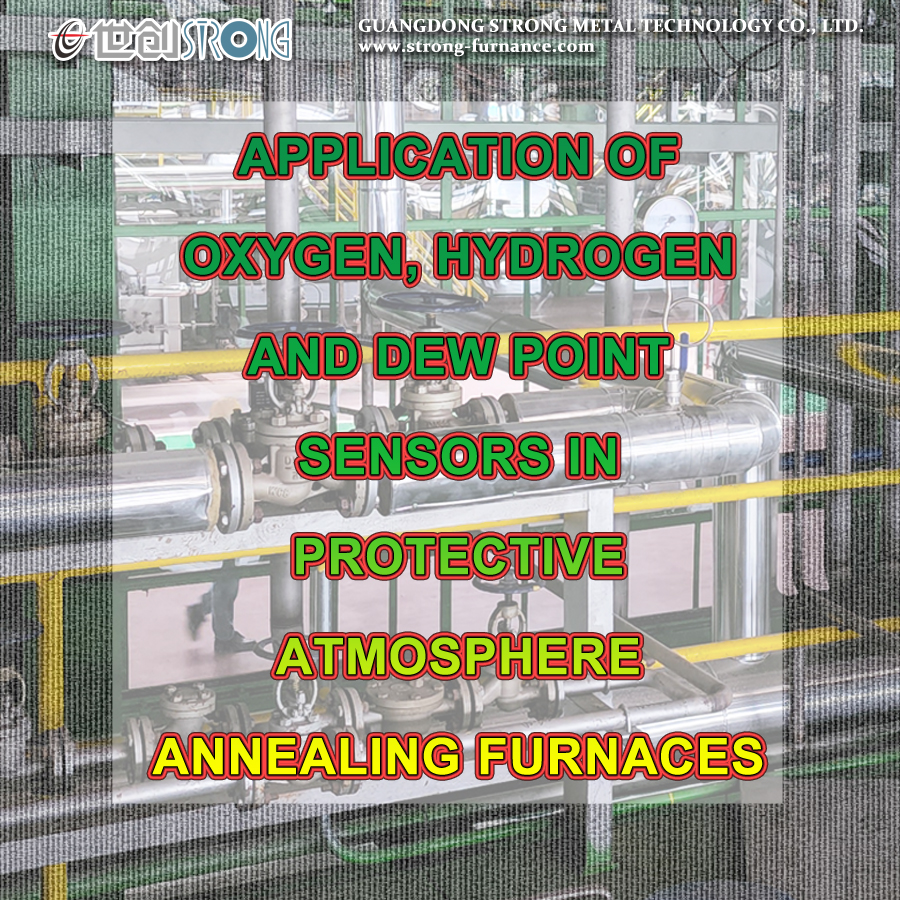
Application of oxygen, hydrogen and dew point sensors in protective atmosphere annealing furnaces
In the process of metal smelting and casting, quenching is an indispensable process, otherwise the ductility of metal products will be very low and cannot be used. In the case of quenching, an annealing furnace is needed.
Annealing furnace, as a heat treatment equipment, is widely used in many industrial fields, including chemical, petroleum, food, metallurgy, machinery, light industry, electricity, shipbuilding, papermaking, mining, medicine and central heating. The heating, cooling, condensation and evaporation processes in these industrial processes are inseparable from the important role of annealing furnaces.

In the process of metal heat treatment, annealing is an extremely critical link. By slowly heating the metal to a certain temperature, keeping it for a sufficient time, and then cooling it (which can be slow cooling or controlled cooling), the plasticity and toughness of the metal can be significantly improved, making its chemical composition more uniform, while also eliminating residual stress and even obtaining the expected physical properties.
The significance of gas detection in annealing furnace
1.Purpose of oxygen content detection
When the annealing furnace is working, the furnace is in a positive pressure state and the oxygen content is almost zero, which is to prevent the outside air from entering. However, due to the insufficient oxygen partial pressure in the furnace, a small amount of oxygen in the air will still diffuse into the furnace. When the oxygen content in the annealing furnace is abnormal, it may be due to the following reasons:
(1) The sealing performance of the sealing rod at the entrance of the preheating section is insufficient or the sealing nitrogen effect is poor;
(2) The heating furnace radiation tube is burned through, resulting in an increase in the oxygen content in the heating section;
(3) There is leakage at the entrance of the circulating fan in the cooling section and related pipeline valves, such as bearings, instrument interfaces, pipelines and furnace wall flanges.
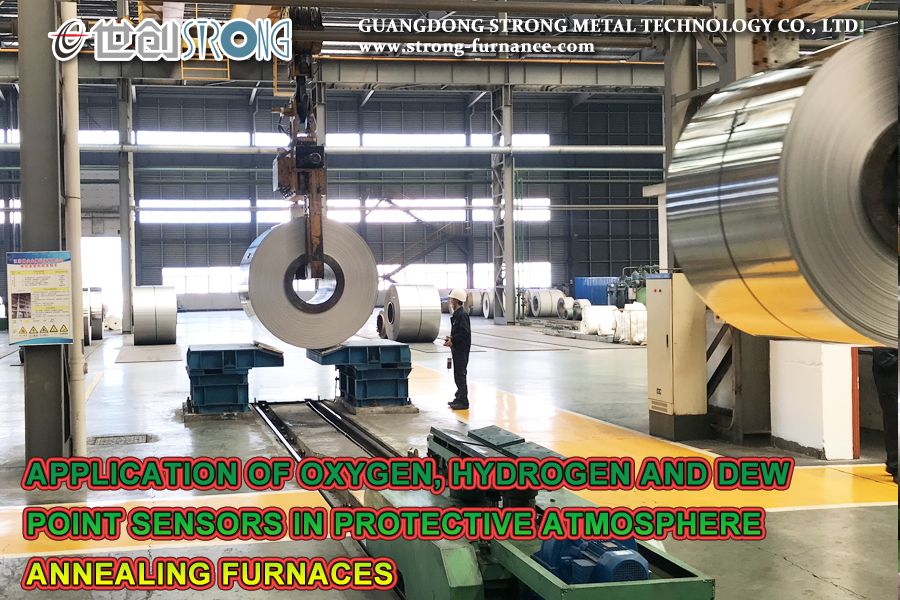
2.Purpose of hydrogen content detection
In the annealing furnace, the main function of hydrogen is to remove the oxides produced on the surface of the steel parts in the outside or heating area, and to reduce and consume trace oxygen in the furnace. The concentration of hydrogen is fixed when it is introduced into the furnace. After the preheating, heating, cooling and other process flows, the concentration of hydrogen gradually decreases. The more hydrogen is consumed, the more hydrogen is consumed by the reduction reaction, and the more oxides are taken away from the steel parts. This means that the more complete the reaction is, the more stable the product quality will be.
3.Purpose of dew point analysis and detection
The dew point of the atmosphere in the annealing furnace is a sign of the water content in the protective gas in the furnace. The high or low dew point can affect the reduction of iron oxide on the surface of the steel parts. The measurement and analysis of the dew point in the furnace can indirectly infer the changes in the composition of the protective gas in the furnace and the state of hydrogen reduction on the surface of the steel strip. The purpose of controlling the dew point is to avoid the occurrence of oxidation reactions and to make rational use of the reduction reaction of hydrogen. Therefore, it is necessary to increase the concentration of hydrogen in the furnace and try to reduce the concentration of water vapor. This is the requirement for reasonable dew point control. In addition, abnormal sealing of the annealing furnace causes external oxygen to enter and react with hydrogen in the furnace to produce water vapor, which will also cause the dew point value to increase abnormally.
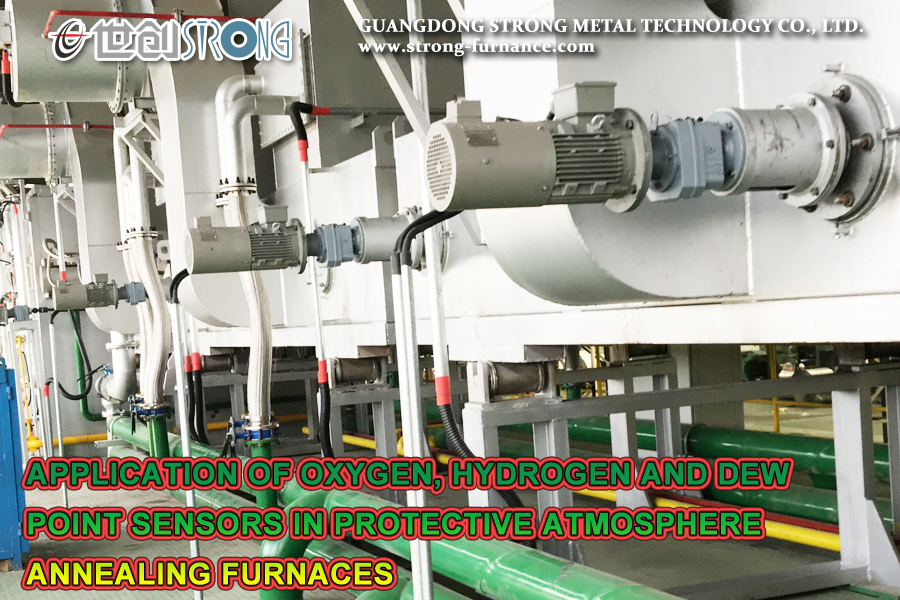
Protective atmosphere annealing furnaces usually use nitrogen-hydrogen mixed gas as protective gas. Through continuous online monitoring of the hydrogen, dew point and oxygen content in the furnace, it is necessary to detect the content of various gases in the furnace in real time online, and perform process control and safety supervision by analyzing the gas content to meet the requirements of safe production and product quality standards.
Strong Metal’s customized continuous stainless steel strip bright annealing line by hydrogen protected
Usage: Used for continuous bright annealing of stainless steel strips, plain steel, alloy steel, spring steel, copper, etc.
Thickness: 0.1~3MM
Width: 250~1450MM
Natural gas (LNG), liquefied petroleum gas (LPG), and diesel can be selected as the main heating methods of the furnace.
The unit of the stainless steel strip bright annealing production line consists of an inlet section, an inlet looper, a degreasing section, a process section, an outlet looper, and an outlet section.
It adopts automated control to form an ultra-highly integrated and precision-controlled production line, realizing technological integration and innovation of stainless steel cold-rolled strip continuous production lines.
Features: fast heating speed, low energy consumption, low cost, safe and reliable, high degree of automation and customizable.
Scope of application: widely used in metallurgy, special steel, and precision strip industries.
